How to drain the tank on an electric water heater video
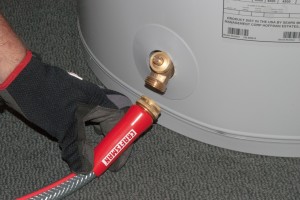

Once a year, you should empty out all the water from your water heater. This helps prevent a buildup of mineral sediment in the bottom of your tank that could reduce the water heater's effectiveness and possibly damage the heating elements. This video from Sears PartsDirect shows how to safely drain your electric water heater tank to flush out sediment.
If you haven't drained your water heater's tank for several years or your water heater is over 3 years old and you've never drained its tank, we don't recommend draining the tank because sediment buildup likely will clog the tank drain—preventing water from flowing out of the tank.
For more water heater repair troubleshooting tips and repair guides, check out our Water Heater Repair page. Get replacement water heater parts at Sears PartsDirect.

Tools and parts needed
Garden hose
Work gloves
Sediment buildup can erode tank, damage heating element
Hi, this is Wayne from Sears PartsDirect. Today I want to show you an often-overlooked maintenance tip on a water heater. We’re going to drain the sediment from the tank.
Over time, sediment can build up, eroding the tank bottom and damaging the lower heating element. Sediment can also interfere with the elements heating up effectively. Flushing the sediment from your water heater will increase its efficiency and longevity and it’s easy to do.
How to drain the water heater tank
First, shut off the electrical power to your water heater. This is extremely important because the heating elements can break if they turn on when the tank is empty.
Next, connect a garden hose to your water heater drain valve. Use a heavy-duty hose that won't be damaged by hot water. Run the open end of the garden hose out into your yard to a safe spot where you can drain the hot water.
Fully open the drain valve. Water will start to flow out of the garden hose, flushing out the sediment. After a couple of minutes, turn on the hot water in the kitchen. This will create an air gap in the pipes that will force the remaining sediment out of the water heater, after we turn off the water supply later.
Turn off the water supply valve above the water heater. This will also stop the flow in the kitchen sink, but be sure to leave the hot water valve open.
The water and sediment will now start draining faster, because gravity and pressure are helping us out. You can open the T&P valve if the water’s not draining fast enough.
If the hose gets clogged during the draining process, you can use a shop vac to unclog it. Be careful, that water is hot.
Once the water stops draining, you can turn the water back on briefly to give the tank another quick flush and remove any remaining sediment. Then close the water supply valve again.
How to refill the water heater tank
Once the tank has drained completely, close the drain valve and disconnect the water hose. Wear gloves to protect your hands. The hose fitting will be hot.
Be sure to close the T&P valve when you start to refill the tank.
Open the water supply cut-off valve for the water heater and refill the tank. As the water heater fills up, you’ll start hearing your open faucet in the kitchen spitting and sputtering as air is purged from the water heater.
Don’t turn the faucet off, until a full stream of water starts to flow again. Now you know that all the air is out of your water heater and the tank is full of water.
Restore electrical power to the water heater and you're done. Make sure it’s full before you turn the power back on.
Repeat this procedure every year to keep your water heater working efficiently.Hey, thanks for watching.
I hope this video helps you out today. Be sure to check out our other videos here on the YouTube channel and don’t forget to subscribe.
Symptoms for electric water heaters
Main causes: excessive tank sediment, high voltage supply…
Main causes: thermostats need adjustment, bad heating elements, faulty thermostats, tank sediment build-up, broken dip t…
Repair guides for electric water heaters
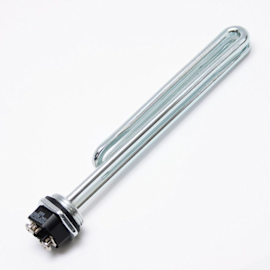
How to replace a water heater element
If your water heater runs out of hot water quickly and one of the two heating elements has failed, replace the element f…
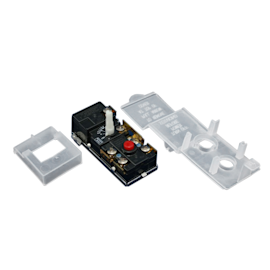
How to replace an electric water heater thermostat
If the water temperature fluctuates or you don't get enough hot water, follow these instructions to replace your water h…
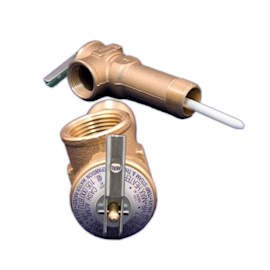
How to replace a water heater temperature and pressure (T&P) relief valve
Replace a broken temperature/pressure (T&P) relief valve on an electric water heater using these instructions.…
Articles and videos for electric water heaters
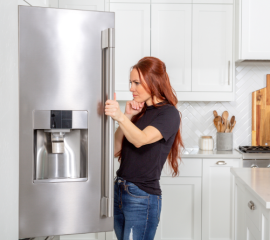
Get advice on simple DIY fixes for appliances that you can safely do on your own.…
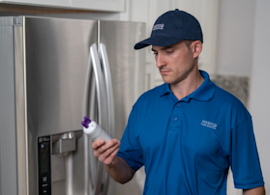
Get answers to frequently asked questions about Sears and Sears PartsDirect.…
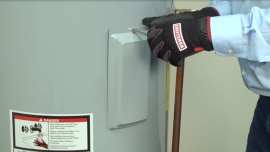
Learn how to troubleshoot issues when your electric water heater is not heating your water.…